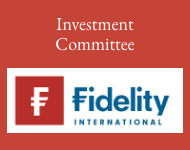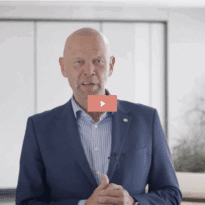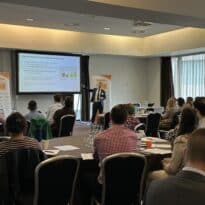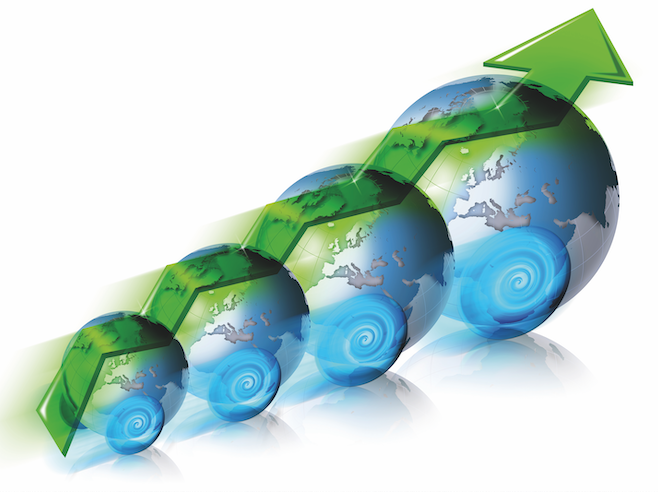This week’s Investment Q&A from FundCalibre is with co-managers Sara Bellenda and Francesco Conte of the newly-rated JPM Climate Change Solutions fund. They explain how, ultimately, the fund’s approach to investing in companies driving innovative solutions is to address climate change challenges and contribute to a more sustainable future.
(Recorded 9 August 2023)
The fund combines artificial intelligence and human insight to identify the companies developing innovative solutions. How does this work in practice and translate into the fund?
The aim of the fund is to invest in those companies that provide the tools that the world will need to decarbonise in large part, therefore the emphasis is really on the solutions to the problem of climate change. As to how we go about finding these companies – because these kind of companies do not report their solutions for climate change – we use an internally-developed artificial intelligence data tool which allows us to scan 15,000 companies worldwide and come up with a ranking by probability that these companies are likely to be involved in or have a solution for the problem of climate change.
We then focus on the top 300 or so, looking at each single one in much greater detail, initially ourselves, but also with our sustainable investment team and also alongside about a hundred analysts that we have worldwide, to really understand whether these companies are providing a solution to the problem of climate change – and to what extent.
Once we’ve identified these companies, then we move on to the financial component: is this a good investment? There we make use of our internal research in order to come up with a portfolio, and this is our best ideas portfolio which is around roughly 50 to 60 stocks.
Are you looking to target decarbonisation specifically, or are you looking for companies that are seeking to adapt to this changing world through perhaps research and technology, or is it a mix?
It’s largely a mix of different things. One thing that came out of both the Inflation Reduction Act and the EU green deal is that efficiency – if we don’t consume a plastic bottle, then we don’t have to worry about recycling it – so, companies that help us to become much more efficient feature very highly in our fund. For companies in the electrification space, for example, we need the spades and shovels to move that renewable energy from the offshore field to our electric hob at home. So, we look at companies that are involved in providing software for the grid, high voltage cables, micro inverters, all the things that you need to either produce that renewable energy or to be able to transport it and finally use it. That’s our general approach.
Two of the five themes that run through the fund are sustainable food and water, and agriculture. Tell us about them.
With water, we’re really interested in finding the companies that take care and are developing the technologies and innovate to preserve every cycle and reuse water. One of the companies that we found early on, and we’ve been involved with since the launch of the fund, is Evoqua Water Technologies Limited which basically focuses on purifying water that can be used in the pharmaceutical sector, in consumer goods, in food industries, in the chemical industries etc. So, the spread of clients for this solution is very diversified. Earlier this year, it was taken over by another water infrastructure player called Xylem Inc. And so, we’ve also generated alpha by holding onto this company. And the feature that we really like here, is the visibility of the contracts that allow us to generate steady returns.
In agriculture, there are a variety of industries and technologies that are really exciting, and basically, it’s all about helping the farmer to work more efficiently with the use of their land, but also across all the tools that they have. I’m thinking about companies like Deere & Company and CNH Industrial N.V. that are at the forefront of investing in future technology, allowing farmers to make more money by working more efficiently, by using less labour and less pesticide, because with this machine, you can precisely aim at the plant or the crop that definitely needs pesticide but not the whole field. These companies are leaders in their fields and they’re cashflow generative, so they make money today and they can invest in the future technologies. And AI here will actually catapult the innovation even further. We’re quite excited about this space.
Governments are really embracing the idea of net zero buildings; where is the innovation in this area, and where are the opportunities for the fund?
Buildings consume a lot of energy throughout the cycle, and the biggest opportunity in terms of decarbonising building lies in retrofitting, which is where a lot of capital expenditure can help, for example with building insulation, ventilation and heat pumps. Of course, retrofitting buildings can be time consuming and it requires building permits, et cetera, but it is all very doable within a timeframe that is required by the policy makers.
The part that is perhaps a little bit more challenging, that does require time, is in the overall construction when it comes to building new buildings. Obviously, these consume energy but also the materials that are required for new buildings are still having to be completely decarbonised. So, there are certain companies that are already at the forefront of this such as Sika AG, which is developing additives for making cement less carbon intense. These are really companies that are providing products that, at the end of the day, save their customers money, because either your tractor’s producing more on the land or you can save 30% of your energy bill in a building. At the end of the day, peoples’ priorities are about saving money: a lot of these solutions are not being sold to reduce CO2 footprints, but by saving money in areas like energy efficiency, you are effectively having a very beneficial impact in terms of your CO2 emissions
One interesting part of climate change solutions is that they’re typically in their early stages or potentially don’t even exist yet. How do you approach these early-stage companies and technologies? Does this mean that the fund has a bias towards small and mid-cap?
The way we kind of think about it is, in technology, you often refer to the S-curve, meaning the rate of adoption. Clearly, when you launch a new product, the rate of adoption is very low, and then it’s like the figure ’S’, it speeds up and demand goes vertical. Like, for example, artificial intelligence at the moment, which is ramping up really fast.
That’s similar to our sector, so, if you look at a solution like hydrogen or a solution like carbon capture, a solution like vertical farming, all three really capture the imagination. And we could probably find startups that have a hundred percent exposure to the theme. But that’s not our exposure to it because if it were a hundred percent, it would probably mean that we’re investing in companies that today have such tiny markets – hydrogen companies usually have sales of a few million dollars. So, even though we’d have a hundred percent compliance with the theme, we’d actually have virtually no impact on the environment.
In an ideal world, there are many things we would not do in terms of climate change solutions, but we live in the real world and people are going to live in a building and they want to be heated and they want to have their creature comforts and so on. So, what we’re looking for are those companies that are at the forefront of their technologies. Again, whether it’s in agriculture, whether it’s in electrification, whether it’s building technologies, etc., they’re really pushing the boundaries of the R&D and making those heat pumps more and more and more efficient. For example, solar energy 10 years ago was quite expensive technology but today, it’s the cheapest source of energy in the world and will keep getting cheaper.
The majority of our investments are in dominant global companies, and the reason that they’re dominant is because they are making the best technologies for saving the most energy, enabling the farmer to produce 30% more crops with the same cost base, etc. And even though a hundred percent of their sales are not dedicated to climate change solutions, it’s still a very large portion of their sales, and because their sales are big, it’s making a huge impact on the environment today. That’s really what we’re looking for.
We are also keeping an eye on newer technologies that will make a huge difference in the years to come, like hydrogen, which is going to be a very big player at some point. But, at the moment, they’re still loss-making, they’re still burning a lot of cash, and we need to see manufacturing costs really reduce in order to commit capital to these industries.
Ultimately, we can do something about climate change; we can adapt, and we can improve the lifestyle as consumers and adopt all these solutions and change to be more prepared for the future, both as consumer and as an investor.
It’s actually quite exciting and it’s not all about accepting, but being ready for it.
Listen to the full interview here:






























